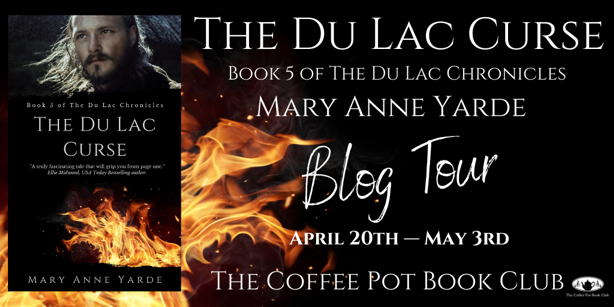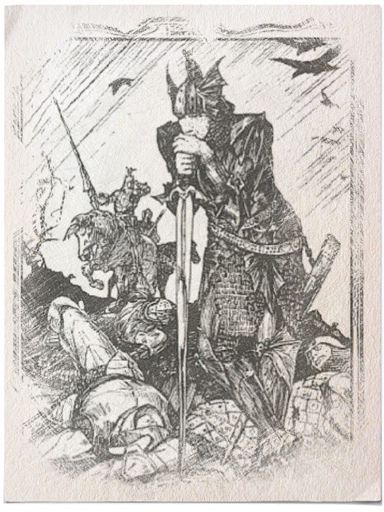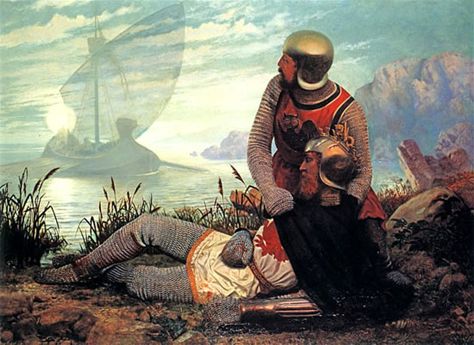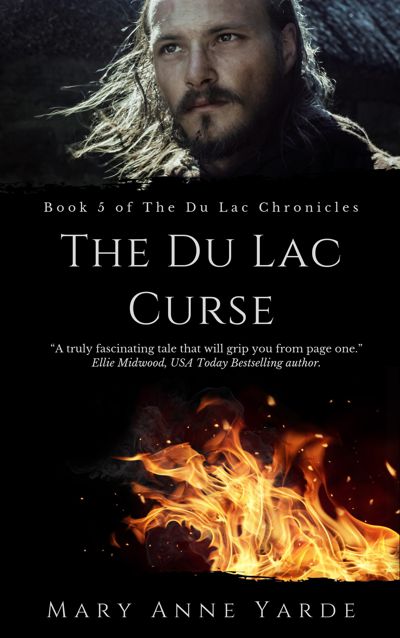
The Early Medieval era or The Dark Ages as it is more commonly known, is one my favourite eras and it is the period my Arthurian series, The Du Lac Chronicles, is set in. The Dark Ages is a challenging period to research as it is the age of the lost manuscripts. They were lost due to various reasons. Firstly, the Viking raiders destroyed many written primary sources. Henry VIII did not help matters when he ordered The Dissolution of the Monasteries. More were lost due to the English Civil War and indeed, The French Revolution, and of course the tragic Cotton Library Fire in 1731. Although researching this era is certainly challenging, it is not impossible. However, many of the primary written sources that are left were written for a purpose and that purpose was usually politically motivated, which in itself is fascinating, although not very helpful. Unfortunately, the sources that survived are not very reliable. They talk of great kings and terrible battles, but something is missing from them. Something important. And that something is authenticity. The Dark Ages is the time of the bards. It is the time of myths and legends. It is a period like no other. If the Dark Ages had a welcoming sign it would say this:
“Welcome to the land of folklore.
Welcome to the land of King Arthur.”
But, I don’t want to talk about King Arthur today. I want to take a look at one of his famous knights and one of my favourites:
Sir Mordred Pendragon.

Who was Sir Mordred and how does he fit into Arthurian Legend?
Mordred was the son of Morgause — Arthur’s sister — but there is debate as to who his father was. Some say his father was Morgauses’ husband, King Lot of Orkney, which would make Sir Gawain his brother. While others say he was Arthur’s illegitimate son, begot with his sister. Either way, he had royal blood running in his veins. Of all the knights in Arthur’s court, Mordred was beyond suspicion. So how did Arthur and Mordred find themselves leading opposing armies on that fateful day in Camlann?
The earliest known reference to the Battle of Camlann can be found in the Annales Cambriae. The Annales of Cambriae is a chronicle that dates back to the 10th Century. It was compelled sometime between 960 – 970AD in Dyfed, Wales. The Annales Cambriae dates the Battle of Camlann in the year 537 AD. And this is what it says…
“The strife of Camlann, in which Arthur and Medraut fell.”
Although this cannot be counted as a primary source, it does, however, draw on older stories — probably verbal — of the telling of this great battle. If you have not already noticed, the quote above says nothing about Arthur fighting Mordred at Camlann. It states that both men fell (died) at Camlann. Mordred was one of Arthur’s most loyal knights; therefore it would make sense that they died together because they fought together. Which begs the question, how did Mordred become the villain of the tale?

In 1136, Geoffrey of Monmouth penned The History of the Kings of Britain. It is Monmouth who suggests that it was Mordred, who was left in charge of Camelot while Arthur crossed the channel to rage war on Emperor Lucius of Rome. It is Monmouth who states that Mordred saw this as an opportunity to take Arthur’s throne. It is Monmouth who states that Mordred not only took the kingdom but also forced Guinevere to marry him. It is Monmouth who states that Mordred and Arthur met at Camlann.
And we believed him.
The ancient Welsh texts were the first to associate Mordred with Camlann. But Monmouth’s casting of Mordred as the villain was soon accepted as the truth and others expanded upon this story making Mordred something of an Anti-Christ — or an Anti-Arthur.
Time passes, and the story changes. Lancelot enters the tale, and some of Mordred’s villainous activities are passed on to Lancelot — such as the affair with Guinevere.
Thomas Malory who penned Le Morte d’Arthur sticks with tradition and casts Mordred as the villain, but this time there is a slight twist to the tale. In Malory’s version, Mordred believes that Arthur is dead, slain by Lancelot. Mordred, with parliaments consent, is crowned king and when he hears that Arthur is alive, he take his army to meet him. But this begs the question, why would the knights follow Mordred instead of Arthur. Malory gives us a clue.
“…with Arthur was none other life but war and strife, and with Sir Mordred was great joy and bliss.”
An interesting idea indeed.
In the Lancelot-Grail Cycle, Mordred is succeeded by his sons. The sons, like their father, had treachery running through their veins. In the older text, it is Constantine who tracks the brothers down and kills them. In later versions, it is Lancelot and Bors.
But the extent of Mordred’s treachery does not end there.
“…him who, at one blow, had chest and shadow / shattered by Arthur’s hand…”
(Canto XXXII)
This quote is from Dante’s Inferno. If you seek Mordred you will find him in the lowest circle of Hell — a place set-aside for traitors.
“I can’t ignore what I saw. Gaius, Mordred is destined to play a part in Arthur’s death.”
BBC adaptation of Merlin 2008 – 2012
Mordred is cast as a magically Druid boy in the BBC show Merlin (2008 – 2012). He becomes a Knight of Camelot and has no notion of treachery until his beloved is sentenced to death. Ironically, if Merlin had accepted Mordred as a source of good, then Arthur would never have died — but hey, what kind of story would that have made?
Mordred became the villain, but maybe he was not so evil as we have been led to believe.

The DuLac Curse
Book 5 of The Du Lac Chronicles
God against Gods. King against King. Brother against Brother.
Mordred Pendragon had once said that the sons of Lancelot would eventually destroy each other, it seemed he was right all along.
Garren du Lac knew what the burning pyres meant in his brother’s kingdom — invasion. But who would dare to challenge King Alden of Cerniw for his throne? Only one man was daring enough, arrogant enough, to attempt such a feat — Budic du Lac, their eldest half-brother.
While Merton du Lac struggles to come to terms with the magnitude of Budic’s crime, there is another threat, one that is as ancient as it is powerful. But with the death toll rising and his men deserting who will take up the banner and fight in his name?
Amazon US: https://www.amazon.com/Du-Lac-Curse-Book-Chronicles-ebook/dp/B086MP1CMZ
Amazon UK: https://www.amazon.co.uk/Du-Lac-Curse-Book-Chronicles-ebook/dp/B086MP1CMZ
MARY ANNE YARDE:

Mary Anne Yarde is the multi award-winning author of the International Bestselling Series — The Du Lac Chronicles. Set a generation after the fall of King Arthur, The Du Lac Chronicles takes you on a journey through Dark Age Britain and Brittany, where you will meet new friends and terrifying foes. Based on legends and historical fact, The Du Lac Chronicles is a series not to be missed.
Born in Bath, England, Mary Anne Yarde grew up in the southwest of England, surrounded and influenced by centuries of history and mythology. Glastonbury — the fabled Isle of Avalon — was a mere fifteen-minute drive from her home, and tales of King Arthur and his knights were part of her childhood.
CONNECT WITH MARY ANNE
Website: https://www.coffeepotbookclub.com/
Blog: https://maryanneyarde.blogspot.com/
Twitter: https://twitter.com/maryanneyarde
Facebook: https://www.facebook.com/maryanneyarde/
Goodreads: https://www.goodreads.com/author/dashboard
Geoffrey of Monmouth, well-known in his own lifetime as a confabulist, drew the names ‘Arthur’ and ‘Uther’ from “a book from Brittany”. That “book” is the extant Cartulary of Redon, which records Arthur and Uther as charter witnesses in the mid-800s.
A confabulist he most certain was! The Cartulary of Redon is a fabulous book, although what is authentic and what was simply made is also open to debate!